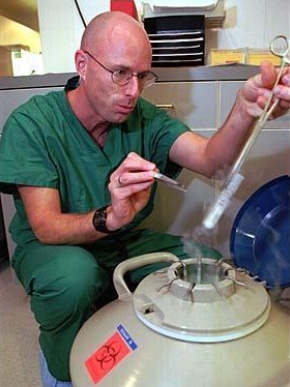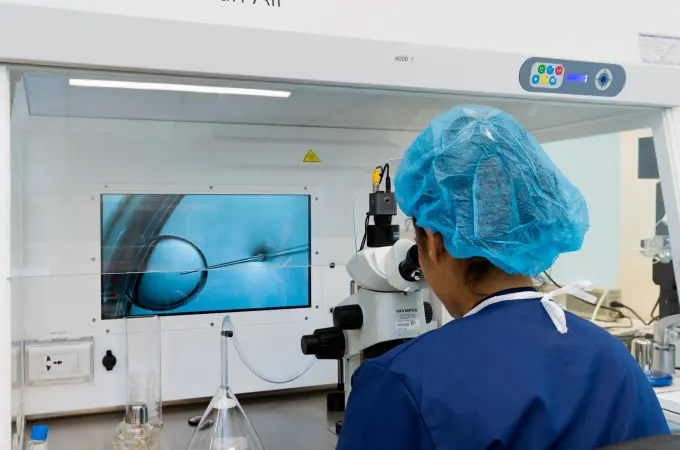
Today, July 25th, marks the 40th birthday of the world’s first baby from IVF, Louise Brown. While previously thought impossible, IVF now helps hundreds of thousands of couples every year build the family they have been dreaming of for so long.
Today we take a look back to appreciate all the advances IVF treatment has had in the last 35 years. From the first success in a town in Great Britain to over 8 million IVF babies born worldwide.
IVF – Improved Pregnancy Rates for More Patients
There have been many advances in fertility treatment since the first IVF success, all resulting in improved pregnancy and delivery rates and a decrease in twin and multiple pregnancy for IVF patients today. In 1993, Shady Grove Fertility had just recently started an IVF program, reporting a 32% delivery rate per embryo transfer for women under the age of 40. Two decades later, women under 35 see a delivery rate of 57%, and women 40 and under have on average a delivery rate of 43% per embryo transfer.
While the early IVF cases were for women with tubal issues, other diagnoses were often excluded. Today, endometriosis, male factor, advanced reproductive age, ovulatory dysfunctions, and unexplained infertility can be overcome with the help of IVF. In the early 1990s, ICSI, or intracytoplasmic sperm injection, was introduced to provide treatment options for patients with severe male factor and fertilization failure rather than depending on donor sperm.
Improved Embryology Lab Techniques

Louise Brown and Dr. Robert Edward, a pioneer in IVF treatment who passed away earlier this year
After an egg retrieval, eggs are placed in a culture media which nourishes the embryo as it develops over the next few days. The culture media has been improved over time and originally, embryos didn’t have the assistance of this special culture media. We are now able to keep embryos in culture until they reach the blastocyst stage, the stage of embryo development just prior to implantation. By being able to see which embryos are able to develop to this stage, we have been able to decrease the number of embryos transferred while at the same time improving the overall implantation rate. By decreasing the number of embryos transferred, the multiple pregnancy rate has decreased. At Shady Grove over 70% of good prognosis patients undergo a single embryo transfer.
While patients today have embryos transferred directly into the uterus, that wasn’t always the case. Since early IVF was primarily to treat blocked tubes, embryos would be placed in the fallopian tubes.
One of the greatest recent advances has been in the field of genetic testing. Patients can now find piece of mind with preimplantation-genetic screening or disease testing. This screening process can identify embryos that carry a genetic disease, or aneuploidy, and indicate which embryos should be transferred back to the patient. This technology has improved the implantation rate and decreased the miscarriage rate per embryo transferred. Read our Genetic Screening Q&A.
Frozen Embryo Transfers

Probably one of the greatest advances in fertility treatment has been the improved freezing technique of eggs and embryos. Vitrification – a fast freeze technique – has become standard in more fertility centers in the last few years and has helped increase the number of eggs and embryos that survive the freezing and thawing process.
In 1997, SGF’s Lab Director, Michael Tucker, was the first to freeze an egg and deliver a baby in the United States. Since then there has been efforts to improve the freezing and thawing process and the big breakthrough came a few years ago with vitrification.
Shady Grove Fertility began using the improved vitrification technique for embryos and eggs in 2009. As a result, success rates for frozen embryo transfers and utilization of eggs previously frozen have increased to a level that is now equal with fresh IVF cycles.
Editor’s Note: This blog was originally published in July 2013 and has been updated for accuracy as of July 2018.






